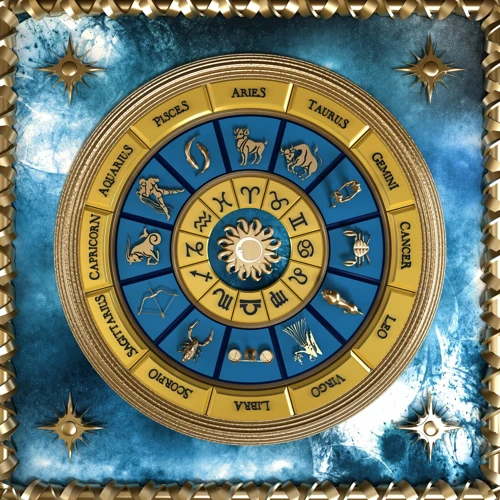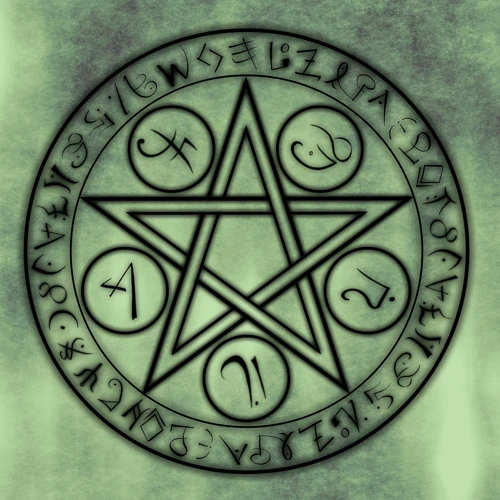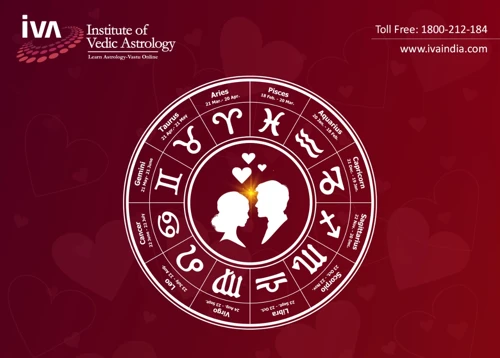Navigating the unique interplay between different elements in astrological compatibility can be a fascinating and complex journey. As we delve into the intricate world of astrology, we discover that the elements play a significant role in understanding how individuals relate to one another. Fire, Earth, Air, and Water – each representing distinct energies and characteristics – come together to form the foundation of astrological compatibility. From understanding the compatibility between Fire and Air signs to unraveling the harmonizing effects of complementary elements, this article will guide you step-by-step through the intricate web of astrological elements and their interplay, helping you unlock the secrets of cosmic connections and fostering deeper understanding in your relationships.
Contents
- The Four Astrological Elements
- Understanding Astrological Compatibility
- Interplay Between Different Elements
- Harmonizing and Balancing Elemental Energies
- Other Factors in Astrological Compatibility
- Tips for Navigating Astrological Compatibility
- Conclusion
- Frequently Asked Questions
- References
-
Frequently Asked Questions
- 1. Can two people with opposite elemental signs have a successful relationship?
- 2. How can the interplay between fire and air signs affect a relationship?
- 3. Are there certain elemental combinations that are more compatible than others?
- 4. What role do planetary aspects play in astrological compatibility?
- 5. Can the moon and rising signs affect astrological compatibility?
- 6. How accurate is sun sign compatibility in determining relationship compatibility?
- 7. Can harmonizing elemental energies be achieved if two people have the same element?
- 8. Is it necessary for all elements to be balanced in a relationship?
- 9. What is the significance of natal chart synastry in astrological compatibility?
- 10. Are there any tips for navigating astrological compatibility in a relationship?
- References
- Read More
The Four Astrological Elements

The astrological elements – Fire, Earth, Air, and Water – serve as essential building blocks in understanding astrological compatibility. Each element possesses its own distinct energy and characteristics, which greatly influence the dynamics of relationships. Fire signs (Aries, Leo, Sagittarius) are passionate, enthusiastic, and adventurous, often bringing excitement and spontaneity to relationships. Earth signs (Taurus, Virgo, Capricorn) are grounded, practical, and reliable, offering stability and security. Air signs (Gemini, Libra, Aquarius) are intellectual, communicative, and social, fostering mental stimulation and lively conversations. Water signs (Cancer, Scorpio, Pisces) are emotional, intuitive, and deeply sensitive, creating a nurturing and empathetic environment. Understanding these elemental influences provides a solid foundation for exploring compatibility between individuals in the intricate world of astrology.
Fire Signs
Fire signs, including Aries, Leo, and Sagittarius, bring a passionate and dynamic energy to astrological compatibility. Individuals under these signs are known for their enthusiasm, assertiveness, and desire for adventure. Their fiery nature ignites a spark in relationships, often leading to a strong sense of excitement and spontaneity. Fire signs thrive on passion and tend to be bold and fearless when it comes to pursuing their desires. They possess a natural leadership quality and are driven by their ambitions. Their captivating presence and magnetic energy can draw others towards them like moths to a flame. Fire signs are known for being charismatic and assertive, always willing to take the lead and inspire others. However, their fiery temperament can also make them prone to impatience and impulsive behavior. Learning about the symbolism of sacred Mayan symbols can provide a deeper understanding of the depth and intensity that fire signs bring to relationships. By recognizing and appreciating the unique qualities of fire signs, we can better navigate and appreciate the interplay between these dynamic energies in astrological compatibility.
Earth Signs
Earth signs, including Taurus, Virgo, and Capricorn, possess grounded, practical, and reliable energies that greatly influence their compatibility with other astrological elements. These signs are known for their stability, strong work ethic, and down-to-earth nature. When Earth signs form relationships, they bring a sense of security, dependability, and practicality. They value loyalty and commitment, striving to create stable and long-lasting connections. In relationships, Earth signs are often dependable partners who offer a solid foundation and support. Their practicality and focus on material aspects can be beneficial for creating a secure and comfortable environment. However, Earth signs may also tend to be reserved and cautious in matters of the heart, which can sometimes hinder emotional expression and spontaneity. It is important for individuals with Earth sign dominance in their charts to find a balance between practicality and emotional connection in their relationships. By understanding the interplay between Earth signs and other elements, we can gain insights into how to foster harmony and balance in our romantic partnerships and friendships.\
Air Signs
Air signs (Gemini, Libra, Aquarius) are known for their intellectual and communicative nature. They thrive on mental stimulation and enjoy engaging in deep conversations. They possess a natural curiosity and are always seeking knowledge and expanding their understanding of the world. Air signs excel at making connections between different concepts and ideas, often bringing a fresh and innovative perspective to any situation. They are highly sociable and enjoy being in the company of others, as they value the exchange of ideas and opinions. Additionally, air signs have a strong sense of justice and fairness, making them skilled at finding balanced solutions in conflicts. Their ability to see multiple sides of a situation allows them to weigh different perspectives and make well-informed decisions. Air signs are often open-minded, adaptable, and willing to embrace change. Their free-spirited nature allows them to approach life with a sense of optimism and excitement. To understand more about the intriguing world of astrological elements, you can delve into the Neptune Effect and its impact, exploring the realms of imagination and spirituality.
Water Signs
Water signs, including Cancer, Scorpio, and Pisces, are deeply emotional and intuitive individuals who navigate the world based on their intense feelings and inner knowing. These signs are highly empathetic and compassionate, often attuned to the emotions of others. With their ability to dive into the depths of emotions, Water signs bring sensitivity and understanding to their relationships. Cancer, represented by the Crab, is nurturing and protective, creating a warm and secure environment for their loved ones. Scorpio, symbolized by the Scorpion, is passionate and intense, seeking deep emotional connections. Pisces, symbolized by the Fish, is dreamy and imaginative, often immersing themselves in the realm of fantasy and spirituality. The Water signs are known for their ability to provide emotional support and create deep connections in relationships. They can be intuitive and empathetic partners who can understand their loved ones on a profound level. However, their emotional nature can also make them susceptible to mood swings and vulnerability. It is important for them to find partners who can appreciate their sensitivity and offer stability in return. Understanding the traits and tendencies of Water signs allows us to navigate their unique interplay with other elements, bringing a sense of emotional depth and connection to astrological compatibility. For more information on exploring various comet types and their exploration, visit comet types exploration.
Understanding Astrological Compatibility

To truly grasp astrological compatibility, it is essential to explore various aspects of it. Sun sign compatibility is a popular starting point, as it focuses on the compatibility between individuals based on their zodiac Sun signs. This provides a broad understanding of the overall compatibility between two people. Elemental compatibility goes deeper, examining how the elemental energies of each individual interact and influence their connection. Additionally, aspects and modalities play a significant role, exploring the specific angles and qualities of the planets in each person’s birth chart. Understanding these elements allows for a comprehensive assessment of astrological compatibility, helping individuals navigate the intricacies of their relationships and gain insight into the dynamics at play.
Sun Sign Compatibility
Sun sign compatibility is a popular and widely-known aspect of astrological compatibility. It examines the compatibility between two individuals based on their respective sun signs. The sun sign represents our core essence, personality traits, and ego. When assessing sun sign compatibility, astrologers analyze the elemental compatibility between the signs. For example, Fire signs (Aries, Leo, Sagittarius) are highly compatible with other Fire signs as they share the same fiery nature and enthusiasm. Earth signs (Taurus, Virgo, Capricorn) and Water signs (Cancer, Scorpio, Pisces) tend to form harmonious connections due to their complementary energies. Air signs (Gemini, Libra, Aquarius) often mesh well with other Air signs due to their intellectual rapport. Astrological compatibility extends beyond the sun signs, but understanding the compatibility of sun signs provides a valuable starting point in exploring the dynamics of relationships. With a deeper understanding of sun sign compatibility, individuals can gain insights into their potential strengths, challenges, and overall compatibility with others.
Elemental Compatibility
When exploring astrological compatibility, understanding the elemental compatibility between individuals is crucial. Each sign corresponds to one of the four elements, and the combination of these elements can greatly affect the dynamics of a relationship.
Here is a breakdown of elemental compatibility:
- Fire and Fire: When two Fire signs come together, such as Aries and Leo, the passion and intensity between them can be electrifying. They understand each other’s adventurous and spontaneous nature, and their compatibility creates a fiery and dynamic union.
- Fire and Earth: Fire and Earth signs, like Aries and Taurus, may have some challenges due to their differing energies. Fire is impulsive and energetic, while Earth is practical and grounded. However, if they can find a balance, their partnership can be a powerful combination of passion and stability.
- Fire and Air: Fire and Air signs, such as Aries and Gemini, often complement each other well. The fiery nature of Fire finds stimulation and intellectual connection with the Air sign’s communication and ideas. Their compatibility can result in an exciting and mentally stimulating partnership.
- Fire and Water: Fire and Water signs, like Aries and Cancer, can have a complex relationship. Fire’s energetic nature may clash with Water’s emotional sensitivity. However, if both signs are willing to understand and respect each other’s differences, they can create a balance of passion and emotional depth.
- Earth and Earth: When two Earth signs, such as Taurus and Virgo, come together, they share a deep understanding and appreciation for stability, loyalty, and practicality. This compatibility can result in a harmonious and grounded relationship, built on trust and reliability.
- Earth and Air: Earth and Air signs, like Taurus and Libra, have different approaches to life. Earth seeks stability, while Air craves intellectual stimulation. However, if they can find common ground and learn from each other’s strengths, their compatibility can lead to balance and growth.
- Earth and Water: Earth and Water signs, such as Taurus and Scorpio, often create a deep and nurturing connection. Earth provides stability and grounding to Water’s emotional depth. Their compatibility can result in a harmonious and supportive relationship.
- Air and Air: When two Air signs come together, like Libra and Aquarius, their partnership is characterized by intellectual connection, communication, and shared ideas. Their compatibility fosters an environment of mental stimulation and equality.
- Air and Water: Air and Water signs, such as Gemini and Pisces, can have a complex yet transformative relationship. Air’s logical nature may clash with Water’s emotional depth. However, if they can find a balance between intellect and intuition, their compatibility can lead to a unique and profound connection.
- Water and Water: Two Water signs, like Cancer and Scorpio, have a deep and intuitive understanding of each other. Their emotional connection is intense and transformative. Their compatibility can result in a soulful and passionate partnership.
Understanding the elemental compatibility between individuals is just one piece of the puzzle in astrological compatibility. Exploring the interplay between elements, aspects, and other factors can help individuals navigate their unique relationships and foster deeper understanding and harmony.
Aspects and Modalities
Aspects and modalities are two key components in astrological compatibility that add depth and complexity to the interpretation of natal charts. Aspects refer to the angular relationships between planets and how they interact with each other. These aspects can be harmonious (such as sextiles and trines) or challenging (such as squares and oppositions), influencing the flow of energy and the dynamics between individuals. Understanding the aspects in a relationship can provide insights into the potential areas of ease and tension.
Modalities, on the other hand, refer to the qualities associated with the three astrological modes: Cardinal, Fixed, and Mutable. Cardinal signs (Aries, Cancer, Libra, Capricorn) are driven, proactive, and initiating, often bringing a sense of leadership and ambition to relationships. Fixed signs (Taurus, Leo, Scorpio, Aquarius) are stable, determined, and resolute, bringing a sense of loyalty and perseverance. Mutable signs (Gemini, Virgo, Sagittarius, Pisces) are adaptable, versatile, and flexible, fostering open-mindedness and a willingness to go with the flow.
When analyzing astrological compatibility, it’s important to consider the interplay between aspects and modalities. For example, a relationship with a mix of harmonious aspects (trines and sextiles) and a balance of modalities can create a harmonious and well-rounded partnership. Conversely, a relationship with challenging aspects (squares and oppositions) and an imbalance in modalities may require extra effort and compromise to overcome conflicts and maintain balance.
By considering both aspects and modalities in astrological compatibility, we can gain a deeper understanding of the dynamics and potential challenges within a relationship. This knowledge can guide us in navigating the unique interplay between different elements and fostering harmonious connections.
Interplay Between Different Elements

The interplay between different elements in astrology creates a fascinating dynamic in relationships. Let’s explore the various combinations:
– Fire and Air: This combination ignites a passionate and energetic bond. Fire fuels the intellectual curiosity of Air, leading to stimulating conversations and shared adventures.
– Fire and Earth: Fire’s intensity can ignite Earth’s practicality and ambition. They can create a balance of excitement and stability, where Fire encourages Earth to take risks, and Earth provides grounding support.
– Fire and Water: Fire and Water can have a challenging yet transformative relationship. Fire’s passion can either ignite Water’s emotions or cause it to evaporate. With understanding and balance, this combination can create a deep emotional connection.
– Earth and Air: Earth and Air strike a harmonious balance of practicality and intellect. Earth brings structure and stability to Air’s ideas, while Air stimulates Earth’s creativity and mental agility.
– Earth and Water: This combination forms a nurturing and grounded connection. Earth provides stability and security for Water’s emotional depth, while Water helps Earth express its emotions and find a deeper sense of fulfillment.
– Air and Water: Air and Water often engage in deep emotional connections and rich conversations. Air brings intellectual stimulation to Water’s emotional world, while Water helps Air tap into their intuition and sensitivity.
Understanding the interplay between these elements allows us to navigate compatibility within relationships and appreciate the unique dynamics that each combination brings. By embracing the strengths and challenges of different elements, we can create more harmonious and fulfilling connections.
Fire and Air
When it comes to the interplay between Fire and Air signs, there exists a natural synergy between these two elements. Fire, with its passionate and energetic nature, finds common ground with the intellectual and communicative Air signs. This combination often leads to a dynamic and stimulating relationship, where ideas and creative endeavors thrive. The fiery energy of Fire signs ignites the imagination of Air signs, fueling their intellectual pursuits and inspiring them to think outside the box. At the same time, Air signs provide the necessary mental stimulation and social connection that Fire signs crave. They engage in deep conversations, exchanging ideas, and challenging each other’s intellect. This partnership is an excellent balance between passion and reason, allowing both partners to grow and evolve in their individual pursuits while also enjoying a harmonious connection. Fire and Air signs understand each other’s need for independence and freedom, making space for individual growth within the relationship. This interplay creates a vibrant and intellectually stimulating bond that thrives on curiosity, creativity, and the freedom to explore new horizons.
Fire and Earth
When it comes to the interplay between Fire and Earth signs, we encounter a fascinating combination of energy and stability. Fire, represented by passion, enthusiasm, and an adventurous spirit, brings a vibrant and dynamic energy to the relationship. Earth, on the other hand, symbolizes practicality, stability, and groundedness. This pairing can create a harmonious balance, with the Fire sign igniting the Earth sign’s sense of adventure and the Earth sign providing support and stability to the Fire sign’s fiery nature.
The Fire sign’s passionate and spontaneous nature can help bring excitement and energy into the Earth sign’s life. They can inspire the Earth sign to step out of their comfort zone, go on adventures, and embrace new experiences. The Earth sign, in turn, provides the grounding and practicality that the Fire sign may need at times. They can offer stability, structure, and a sense of security, helping to ground the Fire sign’s fiery energy.
However, it’s important to note that challenges may arise in this combination as well. The Fire sign might feel that the Earth sign is too cautious or resistant to change, while the Earth sign may perceive the Fire sign as unpredictable or too impulsive. Finding a balance between the fiery passion and the practical stability is key to a successful Fire and Earth relationship.
Ultimately, the unique interplay between Fire and Earth signs offers a mix of excitement, stability, and growth. Both signs have valuable qualities that can complement and support each other, creating a relationship that is vibrant, grounded, and filled with endless possibilities.
Fire and Water
Fire and Water, two seemingly opposing elements in astrology, create a dynamic and complex interaction in astrological compatibility. The fiery nature of Fire signs ignites the emotional depths within Water signs, intensifying their feelings and passions. This interplay can lead to a potent combination of passion, creativity, and emotional connection. Fire signs bring excitement, enthusiasm, and a zest for life to the relationship, while Water signs bring depth, sensitivity, and nurturing qualities. However, due to their inherent differences, Fire and Water can also face challenges in their compatibility. Fire’s intensity and assertiveness may be overwhelming for Water signs, who prefer a more gentle and harmonious approach. Fire’s need for freedom and independence may clash with Water’s desire for emotional security and stability. Balancing these contrasting energies requires open communication, understanding, and compromise. When Fire and Water signs are able to navigate these differences, they can create a unique and powerful bond, combining passion with emotional depth, and finding a harmonious balance between intensity and sensitivity in their relationship. The dynamic dance between Fire and Water offers an opportunity for transformative experiences and deep emotional connections unlike any other elemental combination in astrology.
Earth and Air
The combination of Earth and Air elements in astrological compatibility showcases an intriguing interplay between stability and intellectualism. Earth signs (Taurus, Virgo, Capricorn) ground the relationship with practicality, reliability, and a sincere desire for stability. They bring a sense of rootedness and grounding, while also valuing routine and structure. On the other hand, Air signs (Gemini, Libra, Aquarius) infuse the connection with intellectualism, socializing, and the pursuit of knowledge. They thrive on communication, stimulating conversations, and the exchange of ideas. The Earth sign’s practical nature can provide a solid foundation for Air signs, helping to ground their ideas and bring a sense of practicality to their ventures. Meanwhile, Air signs introduce intellectual stimulation and a fresh perspective that can inspire Earth signs to explore new ideas and engage with the world on a more cerebral level. Both elements can learn from each other; Earth signs can embrace the joy of exploration and intellectual growth, while Air signs can benefit from Earth signs’ grounding presence and learn to focus on practical matters. This combination fosters a balanced partnership where stability meets intellectual curiosity, making it a harmonious and stimulating union.
Earth and Water
When it comes to the interplay between Earth and Water, we encounter a fascinating combination of grounded stability and emotional depth. Earth signs (Taurus, Virgo, Capricorn) bring their practicality, reliability, and nurturing qualities to the relationship, creating a stable and secure environment. Their grounded nature helps to anchor the emotional sensitivity of Water signs (Cancer, Scorpio, Pisces), who bring depth, intuition, and empathy to the partnership. The Earth sign provides structure and a sense of practicality to the often turbulent emotions of the Water sign. In turn, the Water sign helps the Earth sign tap into their own emotions and cultivate a deeper understanding of their feelings. This combination often results in a harmonious and supportive dynamic, where both partners can rely on each other for emotional support and stability. The Earth and Water interplay forms a strong foundation for long-lasting and nurturing relationships, rooted in both practicality and emotional connection.
Air and Water
When it comes to the interplay between Air and Water signs, there exists a unique dynamic that can be both intriguing and challenging. Air signs (Gemini, Libra, Aquarius), with their intellectual prowess and free-spirited nature, bring a breath of fresh air to the relationship. They thrive on mental stimulation, engaging in deep and thought-provoking conversations that captivate the Water signs’ (Cancer, Scorpio, Pisces) emotions. The Water signs, on the other hand, are deeply intuitive and emotionally-driven, offering a sense of depth and sensitivity to the connection. This combination can create a beautiful synergy, as Air signs help Water signs broaden their perspectives and communicate their feelings more effectively, while Water signs teach Air signs the importance of emotional awareness and vulnerability. However, there can also be challenges as the Air sign’s rationality may clash with the Water sign’s emotional intensity, creating conflicts in communication. Finding a balance and open communication is key to navigating this interplay, allowing both partners to appreciate and understand each other’s unique qualities. So, while the Air and Water combination can be complex, it has the potential to create a relationship that is both intellectually stimulating and emotionally fulfilling.
Harmonizing and Balancing Elemental Energies

Harmonizing and balancing the elemental energies is essential in astrological compatibility. By understanding the interplay between the elements, we can navigate relationships more effectively. Complementary elements, such as Fire and Air or Earth and Water, have a natural affinity for one another, creating a harmonious balance of energy. These combinations often bring out the best in each other, complementing strengths and weaknesses. Challenging elements, such as Fire and Water or Earth and Air, require conscious effort and understanding to find a balance. These relationships can be both dynamic and tumultuous, but with patience and communication, they can lead to growth and transformation. Equal element relationships, where both partners share the same element, can provide a deep understanding and connection, but it is important to ensure a healthy balance and avoid becoming too similar or stagnant. By embracing the complexities of elemental interplay, we can foster greater harmony and fulfillment in our relationships.
Complementary Elements
Complementary elements in astrological compatibility refer to the harmonious interaction between two elements that naturally support and enhance each other’s qualities. When individuals have complementary elements in their chart, there tends to be a sense of ease, understanding, and synergy between them.
One example of complementary elements is the combination of Fire and Air. Fire fuels Air, while Air provides the necessary oxygen for Fire to thrive. This pairing brings together the passion, enthusiasm, and inspiration of Fire with the intellectual and communicative nature of Air. Together, they create a dynamic and stimulating connection, where ideas flow freely, and creativity is sparked.
Another example is the pairing of Earth and Water elements. Earth provides stability, grounding, and practicality, while Water brings emotional depth, intuition, and empathy. These elements complement each other by balancing the rational and emotional aspects of a relationship. Earth helps to ground Water’s emotions, while Water helps to soften Earth’s practicality, creating a nurturing and supportive environment.
Complementary elements in astrological compatibility are like two puzzle pieces fitting perfectly together, enhancing each other’s strengths and supporting each other’s weaknesses. It is important to note that while complementary elements provide a harmonious foundation, a successful relationship also requires other factors, such as compatible planetary aspects and a synastry analysis of each individual’s natal chart.
Understanding and embracing the concept of complementary elements can greatly assist in navigating astrological compatibility, fostering a deeper connection, and creating a thriving and balanced relationship.
Challenging Elements
When it comes to astrological compatibility, there are certain combinations of elements that can present challenges and require extra effort and understanding. These challenging element pairings often bring contrasting energies that, if not managed consciously, can lead to conflicts and misunderstandings in relationships.
1. Fire and Water: Fire and Water signs have contrasting natures, with Fire being passionate, energetic, and impulsive, while Water is emotional, intuitive, and sensitive. This combination can bring about a clash of energies, where Fire may overwhelm Water with their intense drive, and Water may dampen the fire of the Fire sign with their emotional depth. It is essential for both partners to find a balance between action and emotions, and to respect each other’s needs for both independence and vulnerability.
2. Earth and Air: Earth and Air signs also pose challenges due to their differing energies. Earth signs are grounded, practical, and focused on stability, while Air signs are intellectual, communicative, and constantly seeking mental stimulation. These differences can lead to clashes in decision-making and priorities. Earth may find Air too flighty and lacking in commitment, while Air may feel suffocated by Earth’s need for security. It is crucial for both partners to communicate openly, find common ground, and embrace flexibility to overcome these challenges.
3. Water and Air: Water and Air signs have contrasting emotional styles. Water is deeply empathetic, intuitive, and guided by emotions, whereas Air is analytical, intellectual, and detached. This combination can result in difficulties in understanding each other’s emotional needs and communication styles. Water may feel that Air is too distant and lacks emotional depth, while Air may find Water too sensitive and emotional. Building strong communication skills and finding ways to bridge the emotional gap is key to navigating this challenging combination.
4. Fire and Earth: Fire and Earth signs also present challenges due to their conflicting energies. Fire is passionate, energetic, and enthusiastic, while Earth is grounded, practical, and focused on stability. Fire may feel that Earth is too cautious and stifling, while Earth may find Fire too impulsive and unpredictable. Balancing spontaneity with stability and finding ways to appreciate each other’s strengths is essential for a harmonious relationship.
Understanding the challenges that arise from these elemental combinations is a crucial step in navigating astrological compatibility. With awareness, effort, and open communication, partners can find ways to embrace and work through these differences, fostering growth and understanding in their relationships.
Equal Element Relationships
Equal element relationships in astrology are those where both individuals share the same astrological element. These relationships can be incredibly harmonious and compatible, as the individuals inherently understand and resonate with each other’s energy. It’s like two peas in a pod, emphasizing the shared qualities and characteristics of their element. Whether it’s Fire, Earth, Air, or Water, the connection between two individuals of the same element can be intense, balanced, and fulfilling. For example, two Fire signs (Aries, Leo, Sagittarius) coming together can create a fiery and passionate bond, fueling each other’s desires and ambitions. They understand each other’s need for excitement and adventure, and there is a mutual spark and chemistry that keeps their connection alive. Similarly, two Earth signs (Taurus, Virgo, Capricorn) can build a solid and stable foundation, contributing to a reliable and grounded partnership. They appreciate each other’s practicality and work ethic, offering support and steadfastness in their shared goals. In the case of Air signs (Gemini, Libra, Aquarius), they can form a mental and intellectual connection, stimulating each other’s ideas and engaging in insightful discussions. Their shared love for communication and socializing strengthens their bond. Lastly, two Water signs (Cancer, Scorpio, Pisces) may find solace and understanding in their emotional depths, nurturing each other’s feelings and creating a compassionate and empathetic bond. They have an innate sensitivity and intuition that allows them to connect on a deep emotional level. In equal element relationships, the shared element acts as a unifying force, enhancing compatibility and creating a sense of ease and understanding between partners.
Other Factors in Astrological Compatibility

Astrological compatibility goes beyond just the elements, encompassing a myriad of other factors that contribute to the dynamics of relationships. Planetary aspects play a crucial role, revealing how the different planets interact with one another in a natal chart. These aspects can bring harmony or tension, influencing the overall compatibility between individuals. Natal chart synastry offers a deeper understanding of compatibility by comparing the positions of each person’s planets and aspects in relation to one another. Additionally, the Moon and Rising Sign provide valuable insights into emotional needs and outward personas, respectively, further enhancing compatibility analysis. Exploring these other factors alongside elemental compatibility allows for a more comprehensive and nuanced understanding of astrological relationships.
Planetary Aspects
Planetary aspects are a crucial component in understanding astrological compatibility. They refer to the relationships formed between the planets in the natal charts of two individuals. These aspects reveal the energetic exchanges and interactions between the celestial bodies, influencing the overall dynamic of a relationship. The most common planetary aspects include conjunctions, oppositions, trines, squares, and sextiles.
Conjunctions occur when two planets are close to each other in the same zodiac sign, intensifying their combined energies and potentially creating a strong bond between individuals. Oppositions happen when two planets are directly across from one another in the zodiac, often leading to a sense of tension and opposites attracting in a relationship. Trines create harmonious connections between planets, fostering ease and compatibility. Squares, on the other hand, form when two planets are at a 90-degree angle, indicating potential challenges and conflicts that can ultimately lead to growth and transformation. Sextiles represent a harmonious yet dynamic aspect, presenting opportunities for supportive and stimulating connections between planets.
By analyzing the planetary aspects in a synastry chart, astrologers can gain valuable insights into the potential areas of compatibility and areas that may require attention and work within a relationship. These aspects provide a deeper understanding of the intricate cosmic influences that shape the dynamics between individuals and offer guidance on how to navigate and harmonize the energies for a fulfilling and balanced connection.
Natal Chart Synastry
Natal Chart Synastry is a profound and intricate method of assessing astrological compatibility between two individuals. By examining the placement of planets and other celestial bodies in each individual’s natal chart, astrologers can gain insights into the dynamics and potential challenges that may arise in a relationship. The comparison and analysis of these celestial placements offer a deeper understanding of how two individuals’ energies interact and influence one another. For example, the synastry of Sun and Moon placements can reveal the emotional compatibility and overall compatibility of a couple. Venus and Mars placements, on the other hand, indicate the potential for romantic and sexual dynamics within the partnership. Additionally, aspects between the planets, such as conjunctions, squares, and trines, further influence the energy exchange and compatibility between individuals. Natal Chart Synastry provides a comprehensive and personalized assessment of compatibility, offering valuable insights into the strengths, challenges, and potential growth areas in a relationship. Whether you’re exploring a new connection or seeking to deepen an existing relationship, understanding the synastry of your natal charts can provide profound insights into the unique interplay between you and your partner.
Moon and Rising Sign
The Moon and Rising Sign are two crucial elements in astrology that influence a person’s identity and emotional tendencies. The Moon represents our emotions, instincts, and subconscious mind, reflecting our innermost desires and needs. It reveals how we react to situations emotionally and how we nurture ourselves and others. The Rising Sign, also known as the Ascendant, represents our outward personality, physical appearance, and the impression we make on others. It embodies our first reaction to the world and how we navigate our environment. The interplay between the Moon and Rising Sign can shape our overall demeanor and approach to relationships.
When the Moon and Rising Sign align harmoniously, there is a sense of congruence between our inner emotions and our outward expression. This alignment enhances our ability to connect with others on a deep emotional level, as our true self shines through authentically. For example, a Cancer Moon with a Pisces Rising may exude a compassionate and nurturing nature, making them naturally attuned to the emotional needs of others.
However, when there is discordance between the Moon and Rising Sign, it can create tension and conflicting energies. For instance, a fiery Aries Moon with a reserved Virgo Rising may experience an inner restlessness that contrasts with their outwardly cautious and practical demeanor. Understanding these clashes can help individuals navigate relationships with awareness, allowing for personal growth and finding balance within themselves.
To fully grasp the influence of the Moon and Rising Sign, it is essential to analyze their placements in one’s natal chart. This analysis provides a more nuanced understanding of how the individual’s emotions and outward presentation interact. By considering the placement of other planets in relation to the Moon and Rising Sign, astrologers can delve deeper into a person’s unique astrological makeup and gain insights into their compatibility with others.
The Moon and Rising Sign play pivotal roles in shaping an individual’s emotional nature and outward personality. Their interplay contributes to our overall compatibility with others and influences the dynamics of our relationships. Understanding the complex relationship between the Moon, Rising Sign, and other planetary aspects allows individuals to navigate their emotional landscape with greater self-awareness and forge deeper connections with others.

Tips for Navigating Astrological Compatibility:
1. Explore Beyond Sun Signs: While Sun sign compatibility is a useful starting point, it is essential to consider other factors in the astrological chart, such as Moon signs and rising signs. These aspects provide deeper insights into a person’s emotional and outward personality, influencing the dynamics of a relationship.
2. Understand Aspects and Modalities: Pay attention to the aspects and modalities between your and your partner’s planets. Harmonious aspects (such as trines and sextiles) indicate ease and compatibility, while challenging aspects (such as squares and oppositions) may bring friction and tension. Modalities (cardinal, fixed, mutable) reveal how you both approach and adapt to change.
3. Embrace Balance: Strive for a balanced approach in relationships by incorporating elements from both partners’ astrological energies. This means recognizing the strengths and weaknesses of each element and finding ways to harmonize them. For example, a Fire sign may learn to be more patient and grounded by embracing the Earth element.
4. Communicate and Compromise: Effective communication is vital in navigating astrological compatibility. Engage in open and honest conversations, expressing your needs, and actively listening to your partner. Be willing to compromise and find common ground to ensure a harmonious connection.
5. Embrace Growth: Astrological compatibility is not static; it evolves over time. Embrace personal growth and encourage your partner to do the same. As individuals evolve, so does the dynamic of the relationship. Stay open-minded, allowing space for exploration, learning, and transformation.
Remember, astrology is a tool for self-awareness and fostering understanding, but it is not a definitive predictor of relationship success. Use these tips as guidance and trust your intuition as you navigate the beautiful and intricate world of astrological compatibility.
Conclusion

In conclusion, navigating the unique interplay between different elements in astrological compatibility offers a profound insight into the dynamics of relationships. The four astrological elements – Fire, Earth, Air, and Water – provide a framework for understanding the distinct energies and characteristics that individuals bring to a partnership. By considering the compatibility of Sun signs, elemental compatibility, aspects, and modalities, we can gain a deeper understanding of the dynamics between two individuals. Furthermore, exploring the interplay between different elements, such as Fire and Air, Fire and Earth, Fire and Water, Earth and Air, Earth and Water, and Air and Water, unveils the intricate dance of energies and the potential challenges and harmonies that may arise. Balancing and harmonizing elemental energies is key to fostering harmony in relationships, whether through complementary elements, equal element relationships, or finding ways to navigate challenging elements. Additionally, other factors such as planetary aspects, natal chart synastry, and the influence of the Moon and Rising signs further enhance the complexity and depth of astrological compatibility. Therefore, by delving into the rich tapestry of astrological elements and their interplay, we can gain valuable insights that contribute to cultivating and nurturing fulfilling relationships.
Frequently Asked Questions

FAQs about Astrological Compatibility
1. Can astrological compatibility determine the success of a relationship?
Astrological compatibility provides insights into the potential dynamics and challenges in a relationship, but it doesn’t guarantee success. It is just one factor to consider alongside other important aspects such as communication and shared values.
2. Are Sun signs the only factor in determining compatibility?
Your Sun sign is a significant factor in astrology, but it is not the sole determinant of compatibility. Other factors like Moon sign, rising sign, and the interaction of elements and modalities also come into play.
3. Can opposite elements attract?
Yes, opposite elements can attract and create balance within a relationship. For example, Fire and Water signs may initially find each other intriguing due to their contrasting natures but can also face challenges in finding common ground.
4. Are elemental compatibility and Sun sign compatibility the same?
Elemental compatibility focuses on the interaction between the elements, while Sun sign compatibility examines the compatibility based on the zodiac signs. Both are important but offer different perspectives on relationships.
5. Can challenging element relationships work?
Challenging element relationships can work with effort and understanding from both partners. It requires open communication, compromise, and a willingness to learn from one another’s differences.
6. How can complementary elements enhance a relationship?
Complementary elements, such as Fire and Air or Earth and Water, bring balance and harmony to a relationship. These pairs often share similar values and can support and inspire each other in their respective endeavors.
7. What role do planetary aspects play in compatibility?
Planetary aspects refer to the angles formed between the planets in two individuals’ birth charts. They provide deeper insights into how the energies between two people interact and can greatly influence compatibility.
8. How does natal chart synastry impact compatibility?
Natal chart synastry involves comparing the birth charts of both individuals to determine how their planets and houses align. It offers a detailed understanding of compatibility by examining the overall compatibility of the two charts.
9. What significance do the Moon and Rising signs hold in compatibility?
The Moon sign represents emotions and deeper needs, while the Rising sign reflects how individuals present themselves to the world. Understanding these signs can provide valuable insights into compatibility, especially in terms of emotional connection and overall compatibility.
10. How can astrology be used as a tool for self-reflection in relationships?
Astrology can serve as a tool for self-reflection by deepening self-awareness and understanding personal strengths and weaknesses. This knowledge can help individuals navigate their relationships with more compassion, empathy, and clarity.
References
- Knowing Your Zodiac Compatibility Is More Useful Than …
- understanding the Elements in Astrology and Their …
Frequently Asked Questions

1. Can two people with opposite elemental signs have a successful relationship?
Yes, two people with opposite elemental signs can have a successful relationship. While there may be challenges and differences in their approach to life, these differences can also complement and balance each other out.
2. How can the interplay between fire and air signs affect a relationship?
The interplay between fire and air signs can create a dynamic and passionate relationship. Fire signs bring excitement and energy, while air signs bring intellectual stimulation and communication skills, resulting in a harmonious partnership.
3. Are there certain elemental combinations that are more compatible than others?
While some elemental combinations may have more inherent compatibility, it is important to consider the overall compatibility between two individuals, which involves looking at their entire astrological charts and not just their elemental signs.
4. What role do planetary aspects play in astrological compatibility?
Planetary aspects in a person’s astrological chart can indicate how their energies align or clash with another person’s energies. Positive aspects can enhance compatibility, while challenging aspects may require more effort and understanding in a relationship.
5. Can the moon and rising signs affect astrological compatibility?
Yes, the moon and rising signs can play a significant role in astrological compatibility. The moon sign represents emotional needs, while the rising sign influences how individuals project themselves to others, both of which can impact the dynamics of a relationship.
6. How accurate is sun sign compatibility in determining relationship compatibility?
While sun sign compatibility can offer insights into certain aspects of a relationship, it is just one factor to consider. It is important to look at other elements, such as the compatibility of the moon signs, rising signs, and planetary aspects, for a more accurate assessment.
7. Can harmonizing elemental energies be achieved if two people have the same element?
Yes, harmonizing elemental energies can be achieved if two people have the same element. However, it’s important to consider other factors, such as individual traits and characteristics, to ensure a balanced and harmonious relationship.
8. Is it necessary for all elements to be balanced in a relationship?
While achieving balance between elements can contribute to a harmonious relationship, it is not necessary for all elements to be perfectly balanced. Each partnership is unique, and a certain level of contrast and differences in elements can bring excitement and growth to a relationship.
9. What is the significance of natal chart synastry in astrological compatibility?
Natal chart synastry involves comparing and analyzing the astrological charts of both individuals to determine the compatibility of their energies, including planets, aspects, and houses. This provides a more in-depth understanding of the dynamics and potential challenges in a relationship.
Some tips for navigating astrological compatibility include open communication, understanding and respecting each other’s differences, embracing growth and change, and seeking professional guidance when needed. Remember, compatibility is a journey, and with effort and understanding, it can lead to a fulfilling and harmonious relationship.







